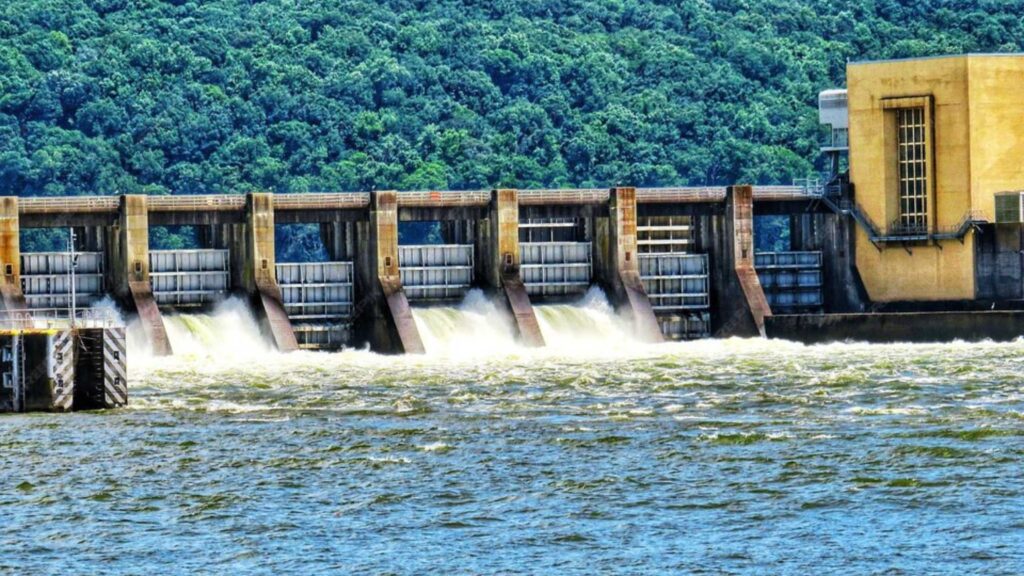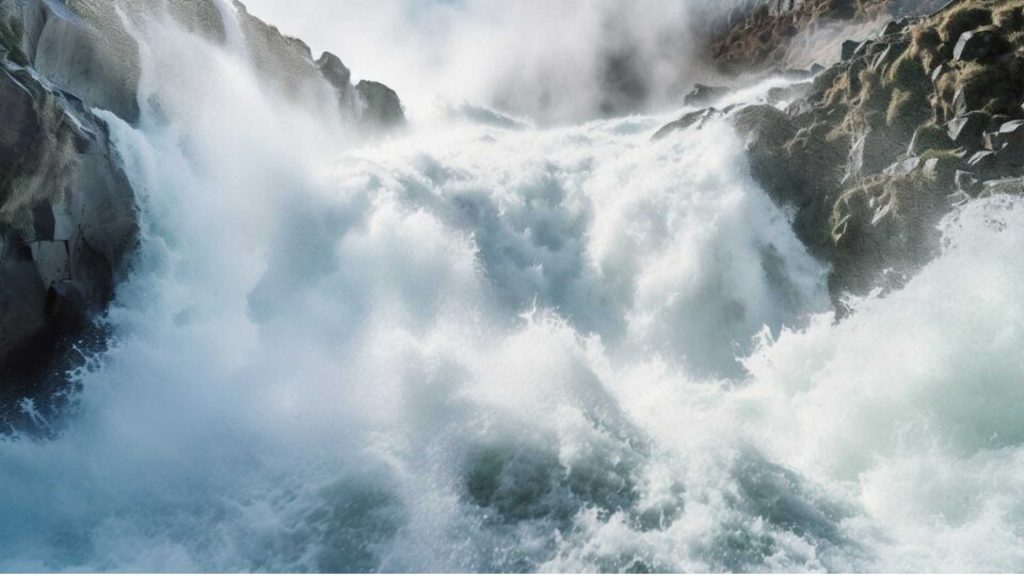The world’s largest source of renewable energy is hydropower, often known as hydroelectric power, which produces electricity by harnessing the force of flowing water. Powering the world’s energy supply has enormous advantages for the economy and the environment. Let’s investigate the technology underlying hydropower, go through its history, and discover its various benefits. We’ll also examine the difficulties it has and its prospects. Hydropower is more than just converting water into energy; it’s about contributing significantly to the development of a sustainable energy environment. This exploration of hydropower is perfect for anyone with an interest in sustainable energy sources or the workings of the world’s energy system.
The History of Hydropower
Using the energy of water is a long-standing tradition that dates back to the Greek and Roman civilizations, which used water wheels for mechanical chores like grinding grain. The basis for current hydropower technology was established by this technique. The earliest known application of hydropower to the production of electricity dates back to the late 1800s. In 1882, the world’s first hydroelectric power plant came online in Appleton, Wisconsin, USA, marking a momentous occasion. With an output of 12.5 kilowatts, this innovative plant demonstrated the potential of hydropower for the production of electricity.

This modest but innovative plant demonstrated how the kinetic energy of water might be converted into electrical energy, sparking the start of a revolution in renewable energy. The Appleton plant’s success opened the door for the creation of bigger, more effective hydropower systems. Technological and engineering developments throughout the ensuing decades made it possible to build important hydroelectric projects all over the world. As the World’s Largest Source of Renewable Energy currently available, hydropower plays a crucial role in the sustainable energy landscape and contributes significantly to the world’s electricity output.
How Hydropower Works
A sequence of processes is used by hydropower facilities to transform the kinetic energy of flowing water into electrical energy:
1. Gathering of Water
Potential energy is stored at a height through the collection of water in reservoirs or the diversion of river water. This method creates a controlled water supply for reliable energy generation by using constructed structures or the natural flow of water.
2. Management of Flow
The water flow from the reservoir to the turbines is controlled by gates or valves. By ensuring that the proper amount of water reaches the turbines, this regulated release maximizes the hydropower plant’s output and efficiency.
3. Function of Turbines
Generators are connected to turbines, which are spun by flowing water. An essential phase in the production of power is the generators’ conversion of the mechanical energy from the rotating turbines into electrical energy.
4. Transfer of Power
Homes, companies, and industries get the electricity produced by the turbines through power lines. The generated power is distributed and integrated into the larger electrical grid through this transmission procedure.
Types of Hydropower Plants
The size and design of hydropower plants vary based on the water supplies and local terrain.
- Run-of-the-River Plants: These plants rely on rivers’ inherent flow without a lot of storage. Generally speaking, they are smaller and less harmful to the environment.
- Storage or reservoir plants: These plants hold water in enormous reservoirs made possible by dams. As needed, the stored water can be released to create energy, offering a dependable and manageable power source.
- Pumped Storage Plants: These facilities function as storage facilities in addition to generators. Extra electricity is utilized to pump water to a reservoir at a higher elevation when demand is low. The stored water is released to create power during periods of high demand.
- Small and Micro Hydropower Plants: These facilities are made for producing electricity on a small scale, usually for use by lone families or isolated villages.
The Benefits of Hydropower
Hydropower is a key component of the world’s renewable energy portfolio because of its many benefits:
- Renewable and Sustainable: Hydropower is a renewable and sustainable energy source because it depends on the natural water cycle. Electricity can be produced continuously by hydropower as long as the water cycle persists.
- Minimal Greenhouse Gas Emissions: Hydropower facilities emit relatively little greenhouse gas when they are in operation, in contrast to fossil fuel-based electric plants. Because of this, hydropower is essential to the fight against climate change.
- High Efficiency: With conversion efficiencies of over 90%, hydropower is among the most efficient energy sources. This indicates that electricity is produced mostly from the energy contained in the flowing water.
- Stable and reliable: The energy source supplied by hydropower is steady and reliable. Even in times of little rainfall, reservoir-based plants may produce a steady power output by storing water and releasing it as needed.
- Grid Stability and Integration: Hydropower facilities are able to swiftly modify their output in order to meet demand, which is a good way to integrate them with other renewable energy sources such as solar and wind.
- Economic Benefits: Hydropower projects generate long-term income from the sale of electricity, boost local economies, and create jobs. Water supply, flood management, and irrigation can all be supported by the infrastructure.
Environmental and Social Challenges
Hydropower development can provide social and environmental issues even with its numerous advantages.
- Habitat Disruption: Fish populations and other species may be impacted by the construction of dams and reservoirs, which can disturb aquatic and terrestrial habitats. Fish passage facilities and careful planning are necessary to lessen these effects.
- Water Quality and Flow: The use of hydropower can change the temperature and flow characteristics of water, which can have an impact on ecosystems downstream. These problems can be addressed by preserving natural flows and putting environmental monitoring into practice.
- Displacement and Resettlement: Communities must frequently be relocated in order to accommodate large hydropower projects. Minimizing social consequences requires providing impacted populations with equitable compensation and support.
- Sedimentation: A deposit of silt in reservoirs can lower storage capacity and contaminate the water. It takes consistent sediment management techniques to keep reservoirs functional.
- Effects of Climate Change: Water availability and flow patterns may be impacted by climate change, which may have an effect on the production of hydropower. To deal with these uncertainties, adaptive management techniques are required.
Global Hydropower Capacity and Leading Countries
By 2023, hydropower will supply more than 60% of the electricity produced by renewable sources and around 16% of the world’s total electricity generation. A number of nations set the standard for hydropower capacity:
- China: With an installed capacity exceeding 350 gigawatts (GW), China is the world’s greatest producer of hydropower. Large-scale initiatives such as the Three Gorges Dam considerably augment this capability.
- Brazil: More than 60% of the country’s electricity is produced from hydropower, which it strongly depends on. One of the biggest hydroelectric plants in the world, the Itaipu Dam, plays a significant role.
- Canada: With an 80 GW capacity and an abundance of water resources, Canada is a major generator of hydropower. The nation gets more than half of its electricity from hydropower.
- United States: With large hydroelectric projects like the Hoover Dam and Grand Coulee Dam, the United States has a substantial hydropower capability. Roughly 7% of the electricity produced in the nation comes from hydropower.
- Norway: By making use of its hilly topography and plentiful water resources, Norway produces practically all of its electricity through hydropower.
Innovations and Future Prospects
With new technologies and continuous innovation improving hydropower’s sustainability and efficiency, the future looks bright:
- Advanced Turbine Designs: As turbine technology advances, efficiency rises and environmental effects fall. Among these developments are low-head and fish-friendly turbines.
- Hybrid Systems: Grid stability and dependability can be improved by combining hydropower with other renewable energy sources, such as solar and wind. Hybrid systems maximize the generation and storage of energy.
- Modular and Small-Scale Hydropower: These hydropower systems are flexible and have less of an impact on the environment. These systems can be incorporated into the current infrastructure and installed in remote locations.
- Digitalization and Smart Grids: Better monitoring, management, and optimization of hydropower operations are made possible by digital technology and smart grid integration. Predictive analytics and real-time data improve dependability and efficiency.
- Environmental Mitigation and Restoration: Sustainable hydropower development depends on ongoing initiatives to reduce environmental impacts and restore ecosystems. Novel strategies such as improved fish passage and river restoration are having a beneficial effect.
- Climate Resilience: Long-term sustainability depends on hydropower systems’ ability to adapt to changing climatic circumstances. Adaptive management techniques and climate-resilient infrastructure will guarantee a steady supply of energy even in the face of uncertainty.
Conclusion
With millions of people throughout the world receiving clean, dependable, and sustainable electricity from hydropower, it is a cornerstone of the global renewable energy scene. Its extensive benefits, historical history, and technological developments highlight its significance in the shift to a low-carbon future and make it the World’s Largest Source of Renewable Energy. However, ensuring the long-term sustainability of hydropower requires tackling social and environmental issues as well as adjusting to the effects of climate change through adaptation.
Hydropower will continue to be essential to supplying the world’s energy demands as we transition to a more sustainable and environmentally friendly energy future. By utilizing creativity, conscientious growth, and cooperative endeavors, we may fully realize the possibilities of hydropower while safeguarding our surroundings and societies for future generations.


